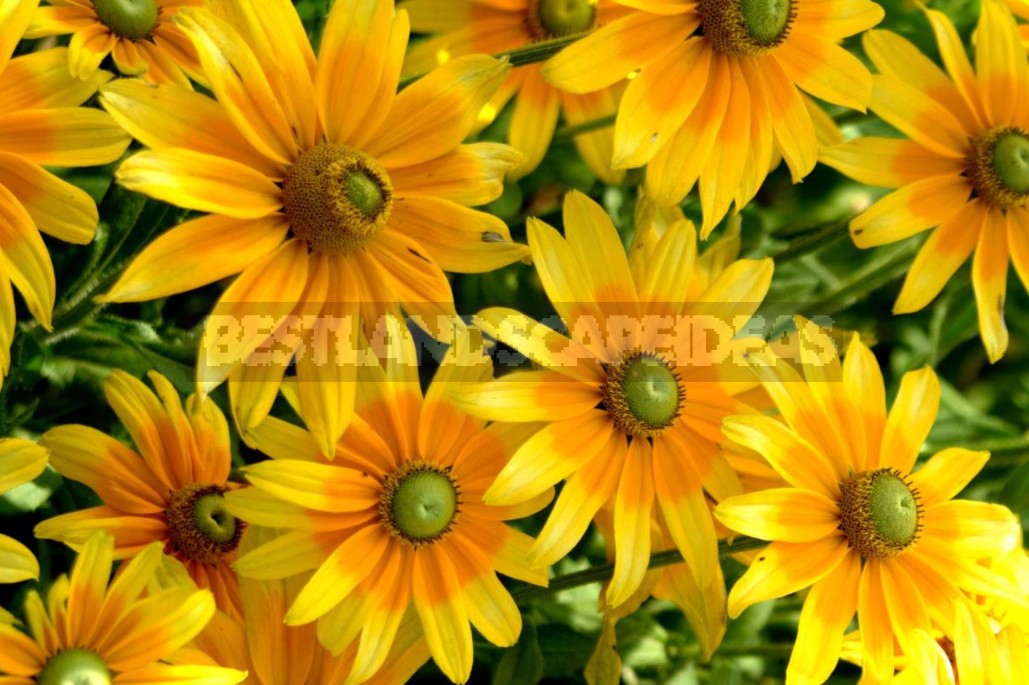
The genus Rudbeckia of the Asteraceae family includes more than two dozen species of herbaceous rhizomatous perennials, there are one-and two-year species. In nature, it grows in the temperate zones of North America, the United States and Canada. In culture, an annoyingly small number of quite decorative and resistant species and garden varieties are widely distributed.
The names of rudbeckia varieties almost always contain the word Gold-gold: ‘Juligold’, ‘Goldquelle’, ‘Goldbal’, ‘Goldsturm’. From the blinding gold of the July top of summer to the Golden swirl of the August waltz. The Golden lampshade, the Golden hurricane — the mere translation of the names of this solar wealth is already getting warmer.
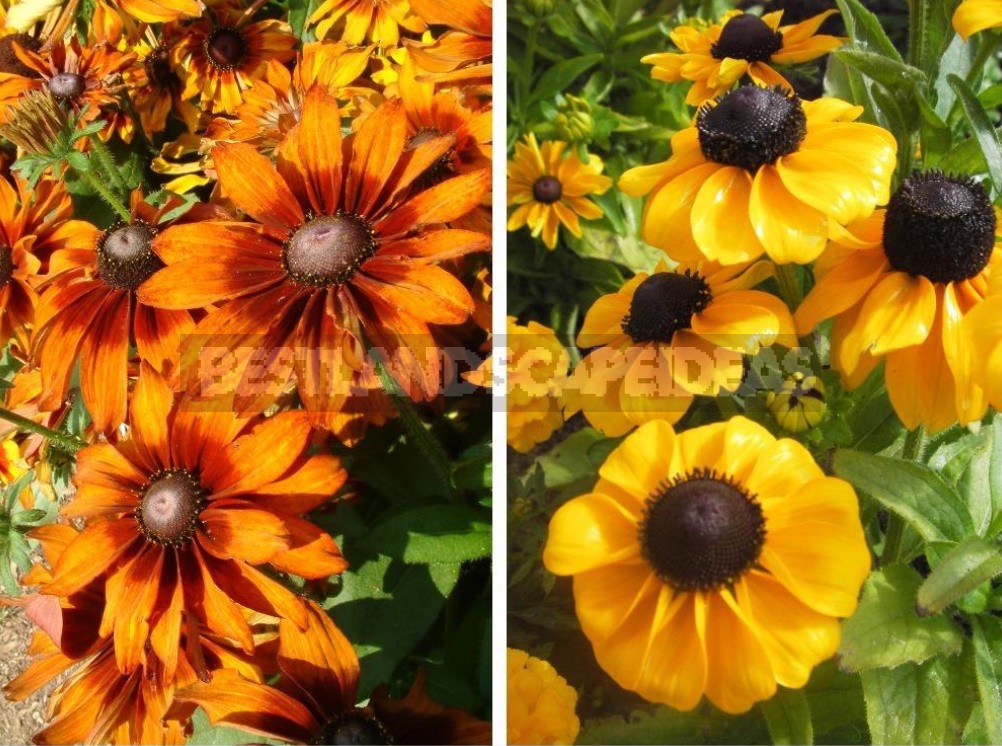
But Rudbeckia is not only a color, although in the purity of yellow, perhaps, they have no equal. Among the undoubted advantages of the plant are abundant flowering, Bush strength, beautiful foliage. Karl Forster wrote: try terracing a garden without arranging terraces as such. You can organize the space by color, planting Rudbeckia of different types and varieties. Shining solar arrays of inflorescences, located at different heights, will give a visual effect of terraces.
Rudbeckia species and varieties
So, we put the smallest ones in the stalls. Unfortunately, we rarely find a charming dwarf analog of the well-known variety ‘Goldbal'(‘Golden Ball’). The variety R. laciniata ‘Goldquelle’ reaches a height of only 50 cm, blooms from the second half of July with double bright yellow flowers.

Slightly higher than R. fulgida. In nature, this Rudbeckia has several varieties, of which the most decorative subspecies is deamii (R. fulgida var. deamii).

The plant forms strong multi-stemmed bushes 60-70 cm high. Stiff stems are crowned with small, but very numerous flowers. Blooms in late July and blooms until severe frosts. The faded inflorescences are decorated with convex’ buttons ‘ of the soplodia.
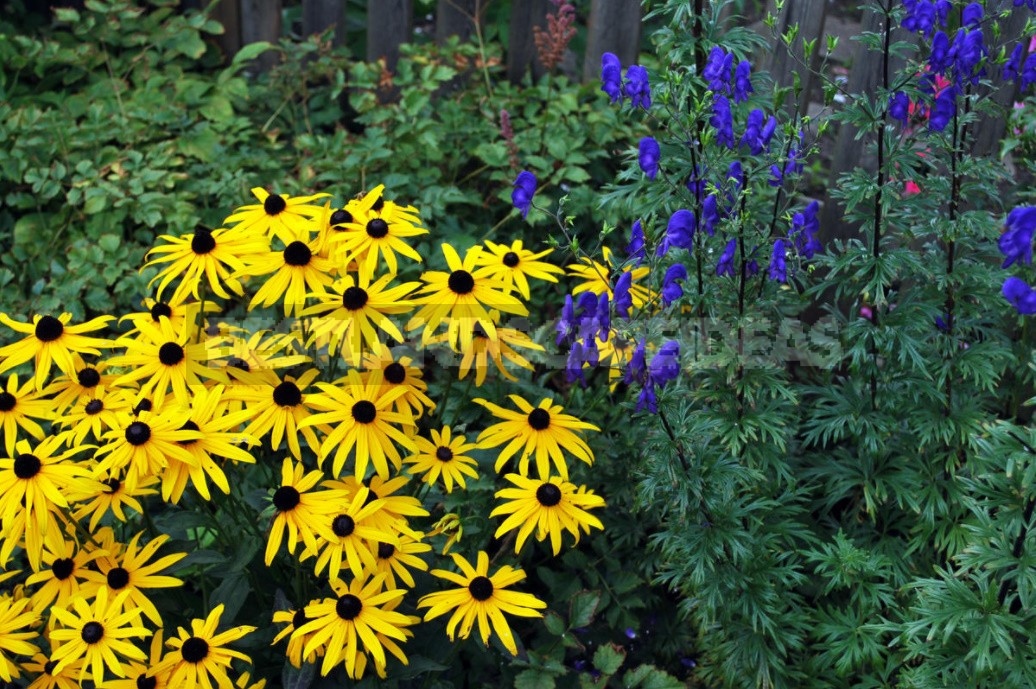
Another subspecies-R. fulgida var. sullivantii-gave one of the best varieties: ‘Goldsturm’. The famous ‘Golden vortex’ (German) was introduced to European garden culture just before the war. Heinz Hagemann, head gardener of K. Forster’s perennial nursery Foerster-Stauden, met a blooming specimen of an unfamiliar variety of this Rudbeckia in the Czech Republic, brought it to Germany and propagated it. And for several decades Rudbeckia ‘Goldsturm’ decorate the flower beds.

The variety is distinguished by large — up to 10 cm in diameter-Golden-yellow “daisies” inflorescences. The middle is almost black. The height of strong bushes is about 70 cm. Flowering is very long, not only because of the abundance of inflorescences on the Bush, but also because each flower is extremely long-lasting.
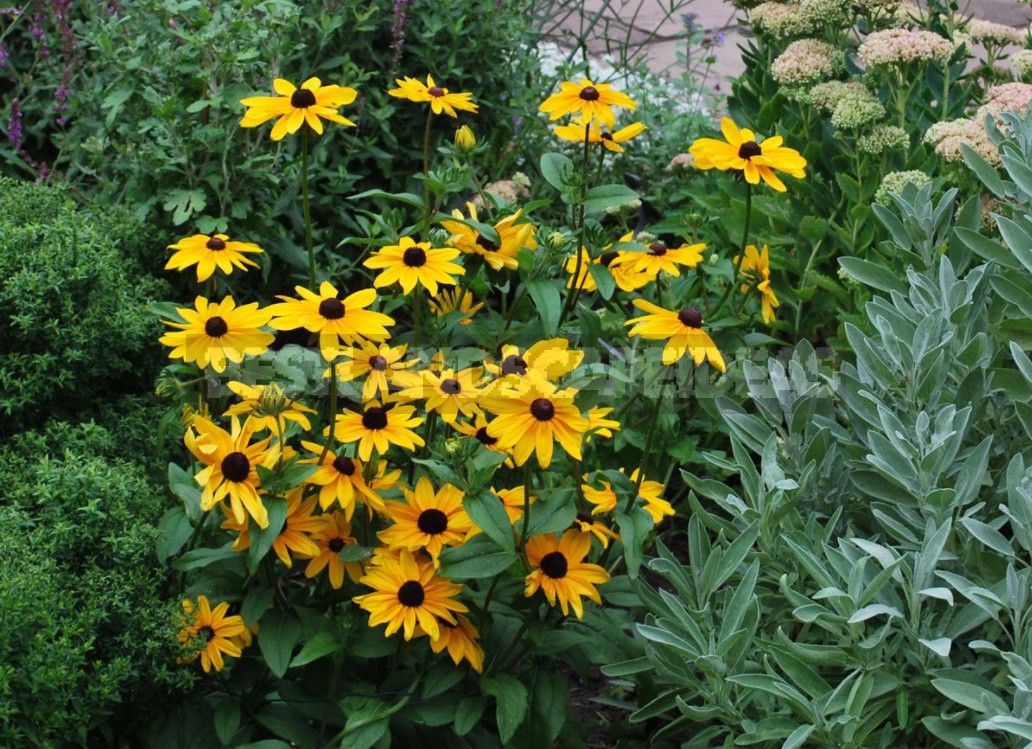
This Rudbeckia blooms in the second half of July, ends flowering in late September. ‘Goldsturm’ is one of the few varieties of Rudbeckia that does not lose mass flowering in partial shade.
Another variety of R. fulgida var. sullivantii – ‘Goldorkan’. The name speaks – ‘Golden Hurricane’ (German). Bushes reach 80 cm in height, mass flowering-August, September. Meter-high bushes have another variety-R. fulgida var. speciosa. Strong, branched at the top of the stems bear small bright inflorescences, marginal flowers are yellow, dark brown in the middle.
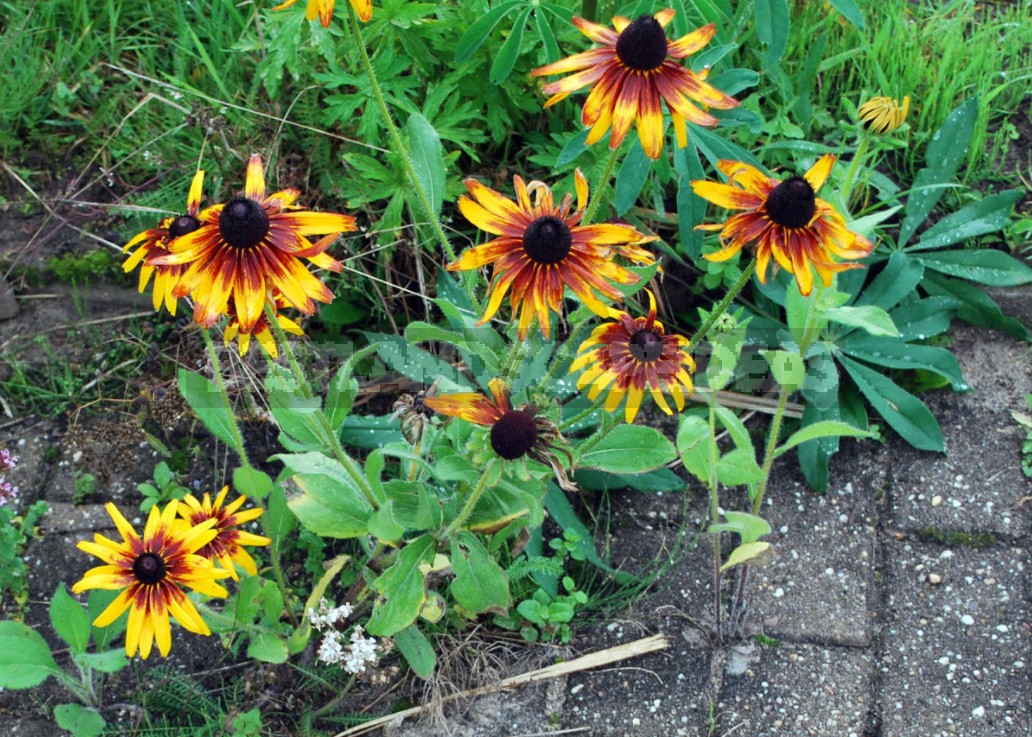
Among the low Rudbeckia, we will not miss R. hirta with its numerous garden varieties. It does not belong to stable perennials, but is easily restored by self-seeding.
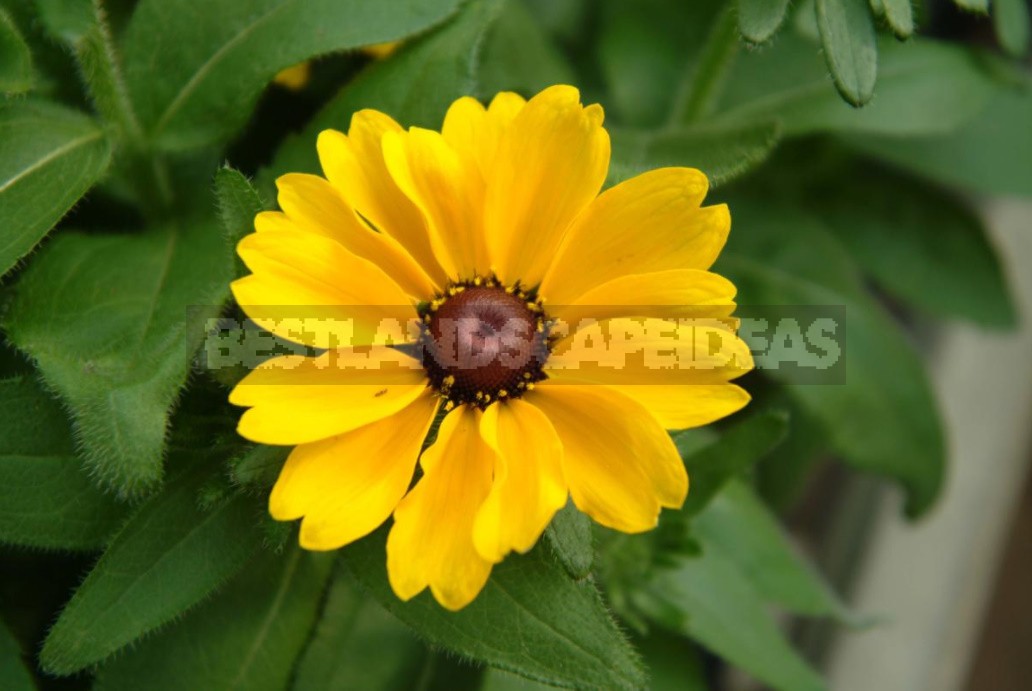
The inflorescences of this Rudbeckia are not as Sunny as those of the previous species. There are quite dramatic tones-terracotta, maroon-brown, chocolate.
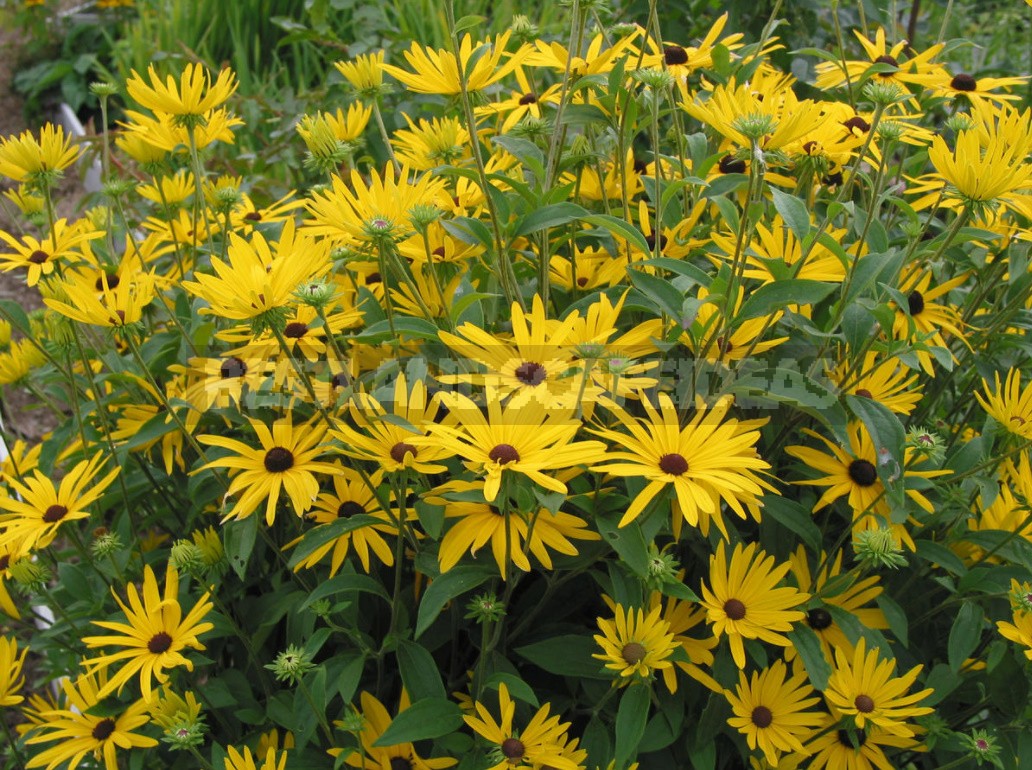
The next tier is represented by the luxurious R. subtomentosa. Strong well-leafy stems branch at the top, the adult Bush bears dozens of large inflorescences. The marginal flowers are bright yellow, the median ones are brown with a reddish tinge. Flowering from early August to severe frosts. The height of the bushes is 120-140 cm.
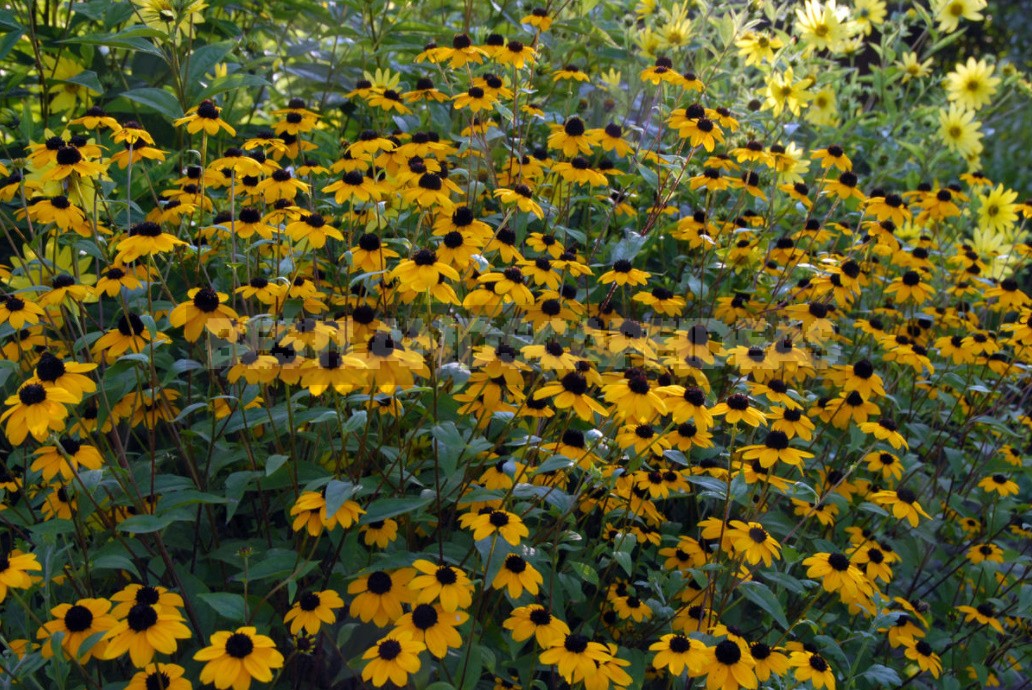
The most ”eye – catching” – R. triloba. Inflorescences are small, so the large and almost black middle is especially expressive. This Rudbeckia is also one of the most elegant. Thin branched stems are colored brown, the Bush is almost transparent, but at the same time strong. Blooms very profusely throughout the height of the Bush. This species is a biennial, and the plants do not always overwinter well, but are easily bred by sowing seeds. When sown in April, the plants develop quickly and flower in August.

The upper tier is decorated with varieties of R. nitida. Inflorescences are large, 8-12 cm in diameter. The marginal flowers have shades of yellow (lemon, Golden), and the median-greenish-yellow, turning brown when flowering. Varieties differ in height and flowering period.
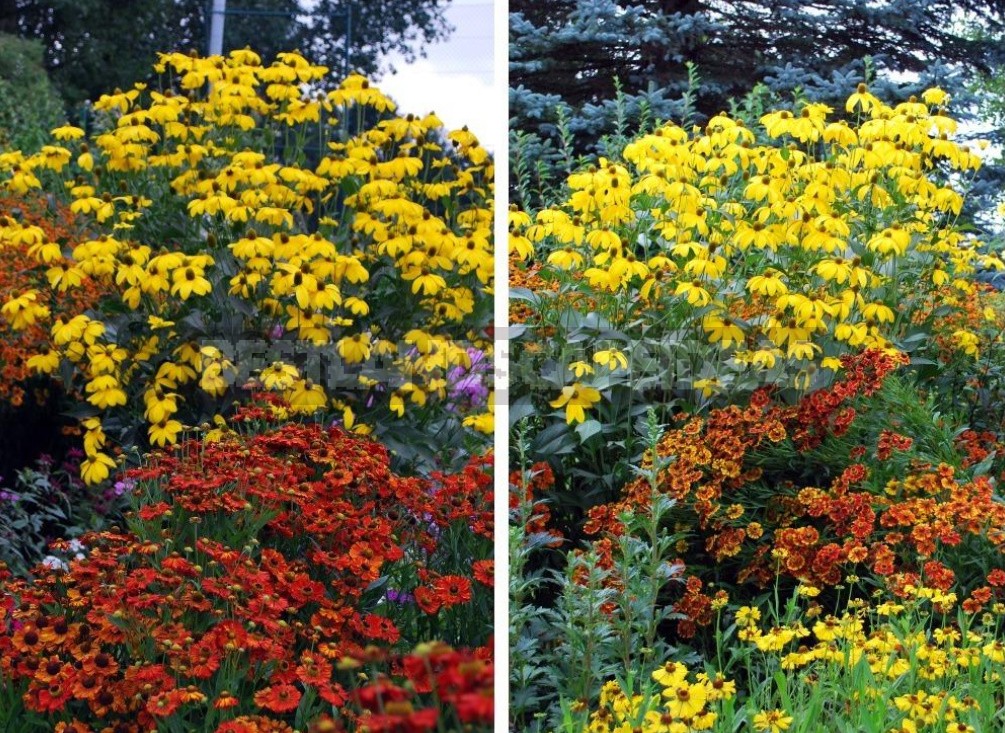
‘Juligold’ blooms in July, this plant has strong stems 2 m high. ‘Herbstsonne’ – a later variety, blooms in August. The variety fully justifies its name – ‘Autumn Sun’ (German): bushes about 2.5 meters high are crowned with large Sunny-yellow inflorescences.
Rudbeckia nitida has strong, stiff stems. Despite the impressive growth, well-developed bushes of this species, growing in a fully illuminated place, do not require support.

Somewhat “dusty” steppe appearance has the most drought-resistant species-R. pinnata, isolated by botanists in a separate genus Ratibida (Ratibida pinnata). Leaves dissected, grayish-green. Strong well-leaved stems 150-170 cm high. Inflorescences- ” daisies” with a highly convex gray-brown center. Marginal flowers are lemon-yellow, lowered down.
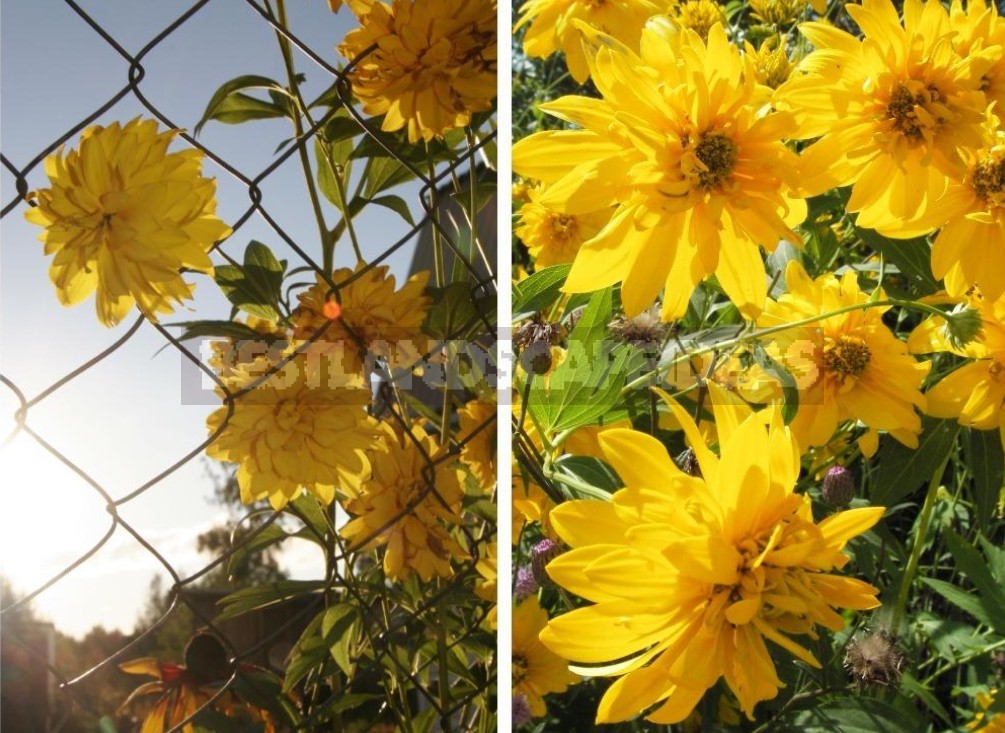
Varieties of R. laciniata also differ in considerable growth. Traditionally, the old variety ‘Goldbal’ (‘Golden ball’) with double inflorescences-pompoms adorns the front gardens. Very responsive to care, which, however, almost never gets it. The frequent defeat of powdery mildew of this variety is not its inherent property. This is just the result of a lack of care: too dry, little food, little light. The real drawback is the need for a garter, but it can easily be made invisible.
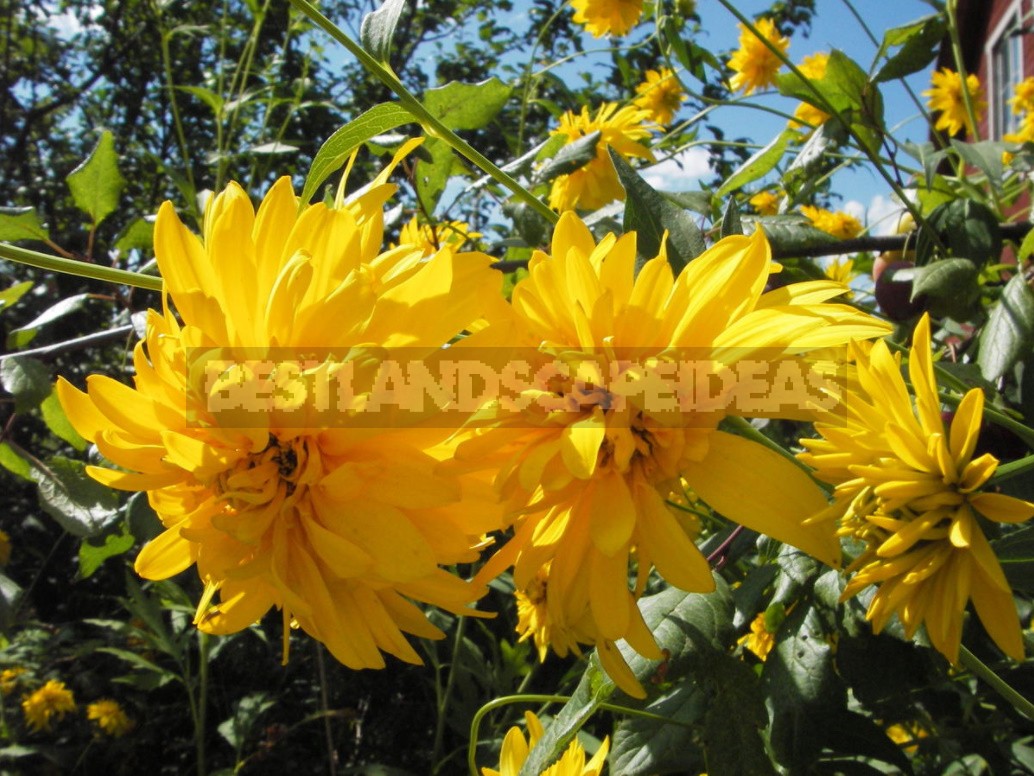
Less common is another variety of Rudbeckia laciniata – ‘Goldshirm’. Its large non-mahogany inflorescences are lighter than those of the ‘Golden ball’, so the two-meter Bush is more stable.
Growing Rudbeckia and placing It in the garden
Rudbeckia it is better to develop nutrient water-holding capacity soils. Varieties Rudbeckia laciniata and Rudbeckia fulgida are particularly demanding for sufficient supply of moisture. In fully lit areas, flowering will be more friendly and abundant. When buying a young plant or growing Rudbeckia from seedlings, do not forget to feed it a couple of times in the first half of summer with a complex mineral fertilizer.
In good conditions, plants rarely get sick. From pests are dangerous slugs and snails – they can completely eat the young leaves. Young plantings of rudbeckia fulgida varieties, rudbeckia triloba seedlings should be mulched for the winter. Planting and transplanting and dividing bushes is better in the spring.

Rudbeckia-good neighbors in the flower garden, they are easy to get along with other one – and perennial plants. The mass of Rudbeckia color can be supplemented with purple and purple tones of asters, Aconitum, Eupatorium, Vernonia. Perfectly combined and grow well next to molinias, taller species and varieties – with varieties Calamagrostis acutiflora, with Miscanthus. Rudbeckia inflorescences look very nice in the clouds of Solidaster, Gypsophila.

Long flowering, Bush strength, undemanding care, attractive appearance of faded plants make Rudbeckia a successful component of “Prairie” flower beds.
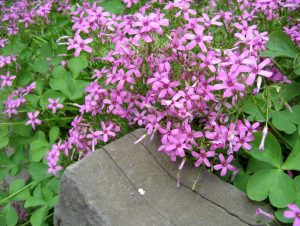
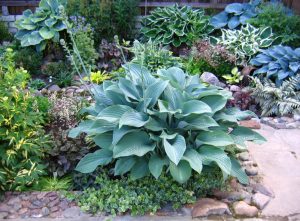
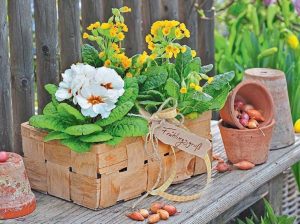

Leave a Reply